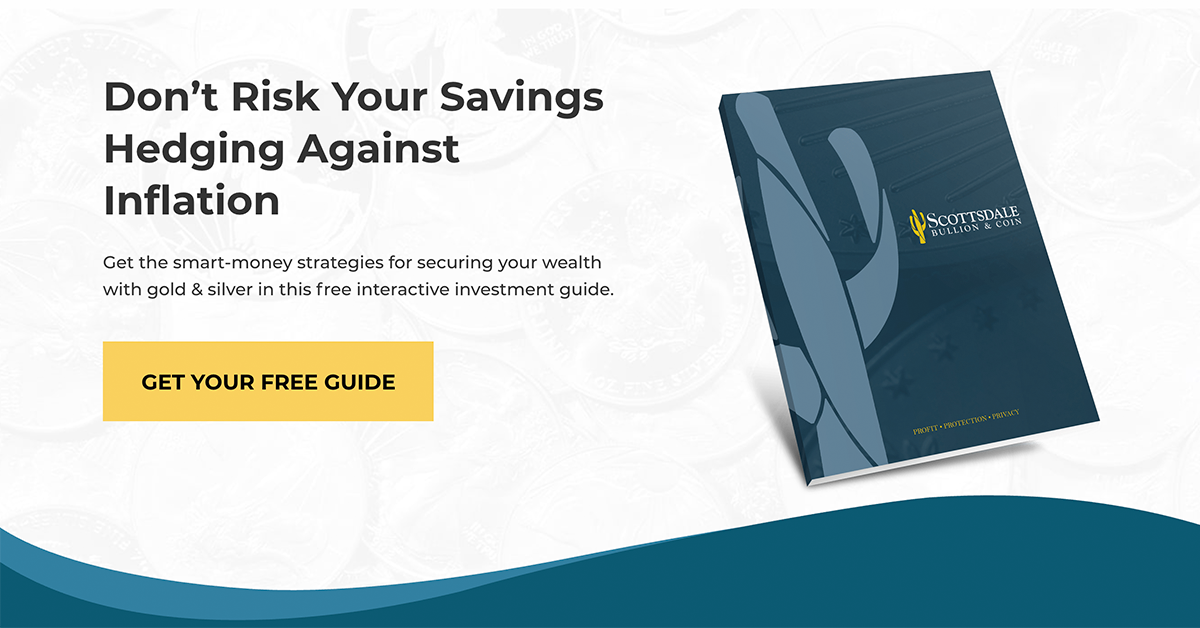“It’s looking more and more like hard assets are the only thing you can protect yourself with…The wealthy are allocating assets into longer-term holds.”— Damian White, Scottsdale Bullion & Coin Senior Precious Metals Advisor
Since mid-2020, Jerome Powell had been using the term “transitory” to describe the inflationary pressures impacting the economy. In his own words, the Federal Reserve Chairman said the term “transitory” was used to describe price fluctuations that “won’t leave a permanent mark in the form of higher inflation.”
Powell made headlines last week after walking back from his use of the word “transitory” when describing the state of the economy. This about-face dealt a massive blow to Americans who were hoping the increasing prices would just be a temporary setback. Now, the federal reserve has made it clear that inflation is here to stay.
If you’re wondering how you should approach this harsh reality as an investor, you’re in the right place. Watch the video to hear from Scottsdale Bullion & Coin Senior Advisors Damian White and Steve Rand.
What should investors do now that inflation is no longer transitory?
The persistent narrative of “transitory” inflation caused a lot of head-scratching among investors who we’re seeing the exact opposite happening right in front of their eyes. With the prices of consumer goods such as gasoline and groceries skyrocketing, there was a glaring disconnect between the real economy and what the fed claimed was happening.
This bubble of lies finally burst last week when Powell spoke to Congress about retiring the word “transitory”. This sly comment came as no surprise and only confirmed the suspicions we’ve had all along: Inflation ISN’T transitory, and recent price changes could be here for the long-term.
The price hikes Americans have been seeing across the board aren’t going to magically disappear as the Fed had been reassuring the public for over a year. It’s now clear the increased pricing is a more permanent fixture in the US economy moving into the foreseeable future. The question now becomes: how can people protect themselves from this kind of inflation?
Wealthy investors are starting to move towards fixed assets to escape from the uncertainty of the US dollar. Assets that aren’t dependent upon the strength of fiat, such as precious metals, can protect your capital from the value-draining effects of inflation, especially when it occurs over the long term.
Free Your Assets from the Stranglehold of the US Dollar – Invest in Gold and Hold!
With the Fed backing down from its long-standing talk of “transitory” inflation and the government continuing to spend trillions of dollars, savvy investors are looking for ways to protect their assets. If you’re wondering “what happens to the gold prices if the dollar collapses?”, you’re already thinking in the right vein.
For centuries, gold and other precious metals have been viewed as reliable hedges against inflation. In other words – assets that outperform fiat currency in times of economic downturn and uncertainty. Despite being a slow-moving asset, that’s exactly what gold has done through dozens of domestic and global economic crashes.
It’s time to protect your hard-earned money from the whims of the federal government and invest in something that’s truly valuable. All of the capital you have in the US dollar is 100% at the mercy of federal regulators who have proven to be untrustworthy. These “transitory” comments are just the latest example.
Without fail, investors end up kicking themselves for not investing in gold sooner. The key to getting through the volatility of the greenback is to buy gold and hold. Get a copy of our free precious metals investing guide before gold takes another jump!




